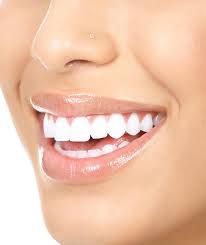
When we ask patients what they would like to improve about their smile, the most common answer is “whiter and brighter teeth”. It is no surprise that tooth whitening is the most common cosmetic procedure patients have at the dentist. Its great popularity and application outside dental clinics has caused controversy over the past few years that has resulted in big changes in the treatments being offered today. In October 2012 the EU Council published a directive that sets out who can use tooth whitening materials and at which strength. This led to a substantial decrease in the strength of the gels being used and thus had an effect on the longevity of the treatment required to achieve the desirable results. Tooth whitening gels when used on healthy teeth and under the instruction of a dentist is a completely safe treatment. Like anything in life not following instructions can lead to undesirable effects.
It is always advisable to consider all options before embarking on any treatment, simple or complicated. A simple scale and polish by the hygienist can make teeth brighter as extrinsic stains start to fade and the underlying enamel reacquires its original shade and shine. An upgrade to the simple scale and polish includes the use of air-polish with fine granules of sodium bicarbonate or aluminium trihydroxide. The ability of the powder to penetrate the tight areas in between the teeth, stains in micro-fractures and joints of the teeth with restorations, gives an extra brightness.
Once all the extrinsic staining has gone we are left with the natural colour of the teeth. In a very simplistic approach the most common shades noticed on natural teeth are A2 and A3. Over the years the shade can become darker and get closer to A3.5 or A4 or varieties of the C and D shades.

Why do teeth get darker?
The reasons our teeth get darker over the years are not only due to long term habits of smoking, coffee and tea drinking or even red wine drinking. Our teeth consist of two mineralised layers. The enamel which covers the crown of the tooth and looks white, and the dentine that is under the enamel and covers our roots that is yellowish. Over years of wear and tear, or earlier tooth surface loss caused by numerous reasons such as hard brushing or increased consumption of acidic drinks, the enamel gets thinner and allows more of the yellow dentine to show through. If you want to further the brightness of your teeth, then you will need to have tooth whitening with hydrogen peroxide.
Enlighten
There are multiple methods and brands available in the market all using the same amount of hydrogen peroxide. As there is no “strongest” method our task was to find the most effective one available and the most comfortable for patients to comply with. Office and home treatments, as well as combination treatments, strive to achieve the same result and this is shade B1. We have found Enlighten B1 Guarantee® to be the most preferred method of whitening amongst our patients. As the 1hr in office treatments are no longer enough and all treatments require patients to proceed with the 2-week minimum home treatment, Enlighten® managed to remove anything that made home whitening “challenging” and caused patients not to comply. With this system you can eat and drink anything you like during your treatment, you get desensitising swabs to minimise any discomfort and you get free additional gel if you comply and due to the condition of your teeth you do not get to shade B1 in the period your dentist estimated..To learn more about this amazing teeth whitening option give us a call on 02072211680.
